The best wireless speakers for 2022
The best wireless speakers can fill your life with music. Not only can they supply multiroom-filling sound at home, but they’re also a convenient way to take your music on the go. When discussing these cable-free audio devices, the “wireless” moniker typically refers to not only how these speakers traditionally play music, podcasts, and more (via a wireless connection like Bluetooth or Wi-Fi), but also the fact that many wireless speakers do not require a hard-wired power connection.
With features like battery life, durability, availability of voice assistants, and sound quality to consider, actually choosing a wireless speaker can be pretty tough. As experts on all things speaker-related, we’ve put together this roundup of the best wireless speakers you can buy right now. The wireless speakers on our list are a combination of Wi-Fi and Bluetooth speakers, but for a list of just the best Bluetooth speakers (because that market is massive compared the Wi-Fi-only market), we have that too.

Sonos One (Gen 2)
The best wireless speaker overall
Pros
- Small footprint
- Impeccable Wi-Fi performance
- Excellent companion app
- Compatible with Alexa and Google Assistant
Cons
- On the expensive side
- Trueplay tuning is iOS-only
Why you should buy this: It’s compact, includes adaptive, room-filling sound, features support for Alexa and Google Assistant, and delivers one of the best control apps in the wireless audio business.
Who it’s for: Those seeking an excellent-sounding wireless speaker with the option of expanding to a multi-room audio system.
Why we picked the Sonos One (2nd Gen):
Sonos has long been considered one of the leading wireless speakers on the market, and for a range of excellent reasons. For starters, Sonos One (2nd Gen) speakers are built from the ground up to deliver an immersive audio experience, regardless of what room it’s placed in. Utilizing Sonos Trueplay, iOS device owners can effectively calibrate their Sonos One to sound its best, with walls, floors, and furniture obstructions all considered when establishing your One’s final mix.
The Sonos One (2nd Gen) is also compatible with Alexa and Google Assistant, allowing you to call up all your favorite music services with simple voice commands, as well as giving you a command center for controlling all of your smart home devices. Additionally, the Sonos One is also compatible with Sonos’ new in-house voice assistant, Sonos Voice Control, which allows you to do much of what Google and Alexa does, but the coolest part is that it’s voiced by Breaking Bad actor Giancarlo Esposito! On top of voice assistant support, the Sonos control app (for iOS and Android devices) gives you access to hundreds of additional radio stations, as well as plenty of ways to customize your Sonos listening experience.
If you’re planning on expanding your wireless music system at some point, or plan on building a wireless Sonos surround-sound system, the Sonos One (2nd Gen) is one of the most adaptive, multi-use speakers you can have in your Sonos arsenal, and it’s our favorite wireless speaker of all time.
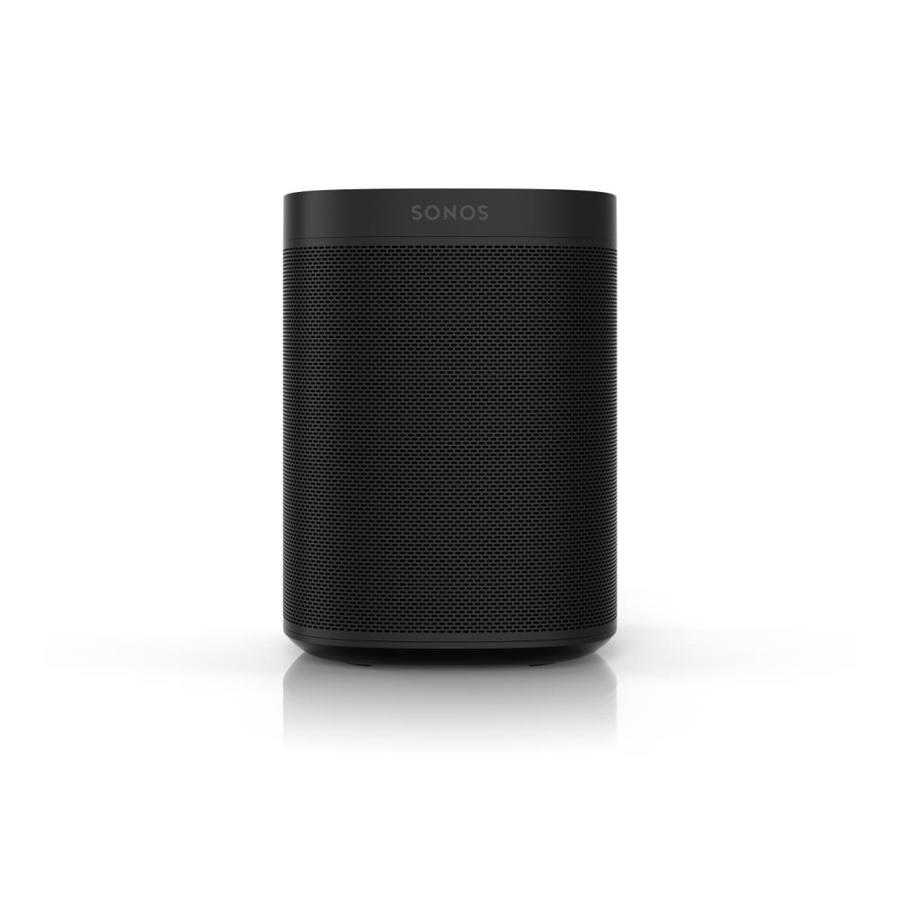
Sonos One (Gen 2)
The best wireless speaker overall
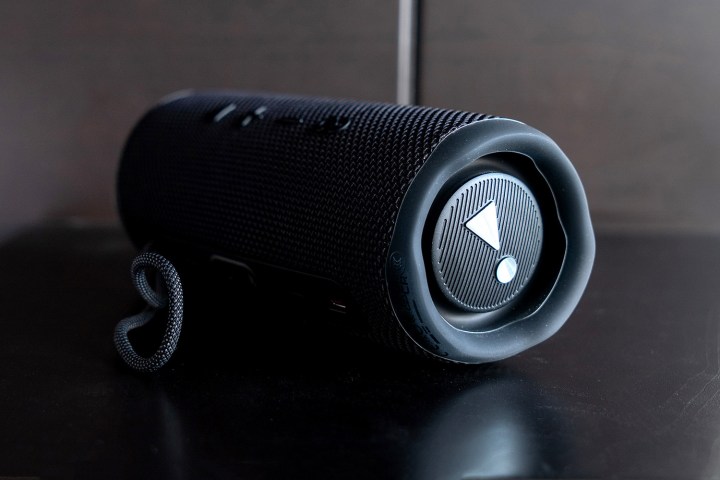
Ted Kritsonis/Pro Well Tech
JBL Flip 6
The most rugged wireless speaker
Pros
- Solid build quality
- Loud and clear sound
- Lightweight and portable
- Excellent water and dust protection
- EQ offers some sound tweaking
- Works with JBL Portable app and PartyBoost
Cons
- Can’t stereo pair with non-Flip 6 JBL speakers
- Doesn’t work as a speakerphone
- Not drastically different from Flip 5
Why you should buy this: You need a tough wireless speaker that can handle a long day of hiking, pool parties, and a rainy and cold weekend away from home.
Who it’s for: Those in need of a trusted wireless speaker that can take on a whole world of dings, drops, and dirt.
Why we picked the JBL Flip 6:
Building upon the rock-solid foundation of the JBL Flip 5, the new and improved Flip 6 is slightly smaller than its predecessor (measuring 7-inches tall, 2.6-inches wide, and 2.8-inches deep), but doesn’t sacrifice sound for the smaller package. In fact, the JBL Flip 6 sounds fantastic! And this time around, soundstaging puts mids and high frequencies a bit higher in the audio hierarchy, while still delivering JBL-recognizable bass and plenty of volume.
But the most important thing to consider for a speaker we deem as “the most rugged” are what protective considerations JBL is using to shield the Flip 6 from dirt, drops, and the elements. Going a step beyond the Flip 5’s IPX7-rating, the Flip 6 is IP67-certified, protecting the speaker from all forms of dirt and debris, as well as full submergence in water up to one meter deep.
Then, when you add in the tough outer shell and rubberized side-bumpers, it becomes clear why we awarded the JBL Flip 6 as the toughest wireless speaker of the bunch.
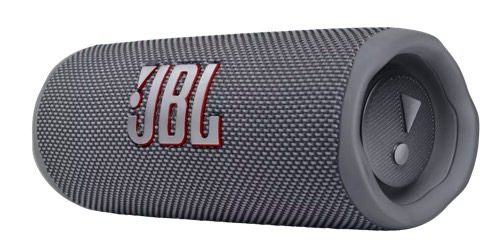
JBL Flip 6
The most rugged wireless speaker
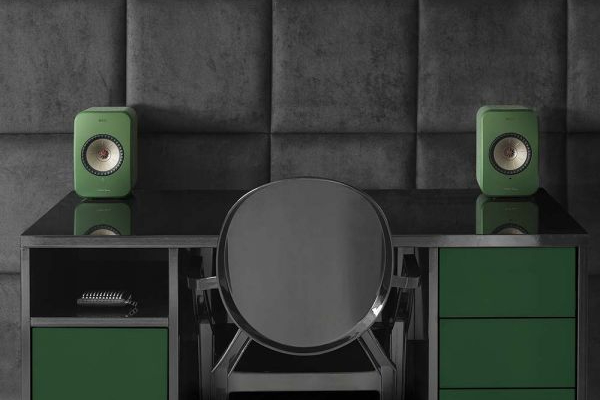
KEF LSX
The best wireless bookshelf speakers
Pros
- Brilliant audio quality
- Wi-Fi and Bluetooth connectivity
- A wide range of physical audio inputs
Cons
- Expensive
- Cheaper cabinet design compared to the KEF LS50
Why you should buy this: Incredible sound quality mixed with wireless convenience for shockingly good value.
Who it’s for: Those who want it all — audiophile sound quality, gorgeous design, and all the benefits of a wireless system, without the insane price point.
Why we picked the KEF LSX:
KEF’s esteemed LS50 Wireless IIs are among the best sounding bookshelves you can buy for the money, and their wireless convenience makes them among our favorite speakers we’ve encountered. But what we love about KEF’s LSX is that they give you almost everything you’ll get with the KEF LS50 Wireless, for less than half the price. While the LSX don’t sound as big in either soundstage or velocity (the LS50 are among the loudest speakers we’ve tested that never incurred distortion), they offer the same incredible detail, dynamic expression, depth, and clarity we’ve come to expect from KEF’s best in a smaller and more minimalist package.
Like the LS50, the LSX not only deliver crystalline sound and impeccable balance, but they also offer nearly every conceivable option for extending and customizing that sound to fit your taste and room setup through a dedicated app. And with Wi-Fi and Bluetooth wireless connection, they’re also loaded with wired options like optical input, analog input, a USB connection for PC audio, and a subwoofer output.
That last option is a great way to raise their cinematic game, too. While the LSX offer impressive bass for their size thanks largely to KEF’s Uni-Q concentric tweeter design, they can’t get quite as low with authority as their larger siblings. In addition, they trade the gorgeous piano gloss cabinets of the LS50 for less opulent fabric jackets.
That said, the KEF LSX offer something the LS50 don’t — a fully wireless connection, without the need of a connecting wire between the stereo speakers. With nearly all the other benefits of the LS50 Wireless, the LSX are an incredible value and a great compromise for those looking to keep their budget right around the $1,000 line.
Additionally, if you like what you’ve read about the LSX’s, the latest generation of these sublime speakers, the KEF LSX II, will hit the shelves at the end of June. The refreshed speakers boast improved wireless connectivity, the addition of USB-C and HDMI ARC, and will cost $1,400.

KEF LSX
The best wireless bookshelf speakers

Ultimate Ears Megaboom 3
The best portable wireless speaker
Pros
- Loud, dynamic sound
- Easy to use
- Waterproof
- Great battery life
Cons
- Some functionality only supports Apple Music/Deezer
Why you should buy this: With 20 hours of battery life, the ability to withstand both dust and water, and sound quality that makes you forget it’s a Bluetooth speaker, the UE Megaboom 3 is an ideal portable companion.
Who it’s for: Those who need a portable speaker that can withstand the elements, yet still pump out tons of high-quality sound.
Why we picked the UE Megaboom 3:
The Ultimate Ears Megaboom 3 lacks a lot of features you might find in some other Bluetooth speakers, like the ability to take phone calls, plug in an external music source, or charge up your phone. So why would we pick it?
Simple: The UE Megaboom 3 sounds amazing — so good in fact, that we’d happily give up those extra features to get this kind of sound. Then there’s the weekend’s worth of battery life, and the Megaboom 3’s beach-proof construction. Add its attractive design and clever multifunction button, and you’ve got a Bluetooth speaker that will make any setting feel like your own private listening lounge.

Ultimate Ears Megaboom 3
The best portable wireless speaker

Sonos
Sonos Roam
The best portable Sonos speaker
Pros
- Excellent design
- Lightweight and portable
- Totally water and dustproof
- Very good sound for its size
- Choice of smart speaker assistants
- Wireless charging
Cons
- No Bluetooth stereo pairing
- Doesn’t work as a speakerphone
- Less battery life than some other speakers
Why you should buy this: It’s a high-quality speaker that expands the esteemed Sonos ecosystem beyond the home.
Who it’s for: Sonos devotees on the move or those looking to see what all the fuss is about before jumping in to Sonos with both feet.
Why we picked the Sonos Roam:
Sonos has arguably done more than any other brand to popularize and normalize wireless, multiroom speakers. But until recently, these Wi-Fi speakers have been confined to use in and around the home. Last year, however, the company set them free, launching the Sonos Move and Roam, two battery-powered portable speakers with Wi-Fi and Bluetooth connectivity, and wireless charging, that take much of Sonos’ famed features and untethers them.
And while the Sonos Move (which is similar in size and form as the above-mentioned Sonos One) could easily be included on this list, as far as portability goes, we’re going to focus on the Roam as it’s rugged (IP67 rated), lightweight (0.95 pounds), and ultra-portable (about the size of a sleeve of cookies), but surprisingly packs a sizeable punch when it comes to sound and soundstage.
Sonos users will love how the Roam easily integrates into their existing Sonos ecosystem over Wi-Fi and can be controlled with the excellent Sonos app. And when you’re ready to hit the road or are out of the range of Wi-Fi, you can easily pair the Roam just like any other Bluetooth speaker and control it through the Sonos app or Spotify, AirPlay and more.
There are a couple of limitations, however. While you can pair multiple Roams together, you cannot stereo pair two Roams over Bluetooth — for that you’ll need to be connected to Wi-Fi. That, and you can’t pair the Roam to any of your existing Sonos speakers, such as using them as surround speakers for a Sonos Beam, Sonos Arc, or the new Sonos Ray.
But that’s neither here nor there, the Sonos Roam is a great-sounding, portable Sonos speaker with Google Assistant, Alexa, and the new Sonos Voice Control assistants, a 10-hour battery, wireless charging, and it’s available in a bunch of cool colors. What else do you want out of a Wi-Fi Bluetooth speaker for under $200?

Sonos Roam
The best portable Sonos speaker
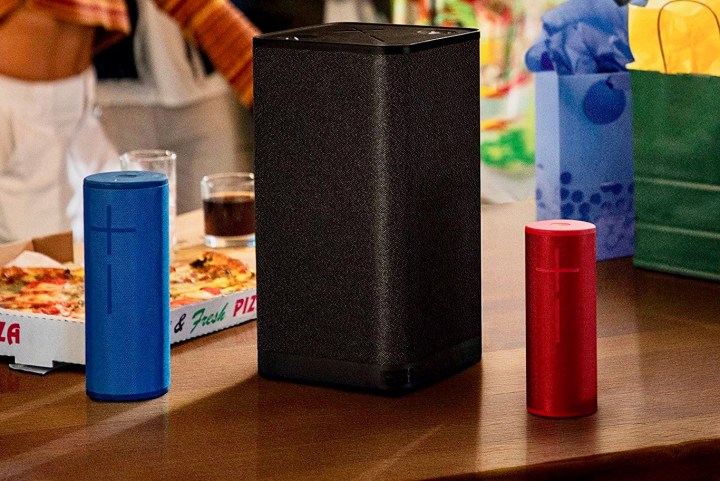
Ultimate Ears Hyperboom
The best for bass
Pros
- Simple setup, easy music playback
- Variety of source options
- Excellent battery life
- Impressive low end
Cons
- Lacks Wi-Fi compatibility
- Less portable than predecessors
Why you should buy this: You’re looking for the biggest and best sound you can get, regardless of price point.
Who it’s for: Music lovers and frequent event hosts.
Why we picked the Ultimate Ears Hyperboom:
If you’re looking for a speaker you can chuck in your swimming pool, the Hyperboom isn’t the pick for you. But this IPX4-protected party monster is one of the best sounds with big bass you’re going to find outside of a dedicated stereo or home theater system.
Under the armor, the Hyperboom houses precision woofers, passive radiators, and soft dome tweeters to achieve one of the best overall soundstages of any speaker on our list. This is also thanks to the Boom’s adaptive EQ. Indoors or outdoors, the Boom knows when it’s moved, and balances sound output based on the environment it’s placed in.
The pullout strap of the Ultimate Ears Hyperboom makes it easy to load and unload the speaker at your next gathering. This is also one of our favorite speakers for sharing. Four dedicated inputs mean you can have four devices all paired at once, so you can switch between devices and playlists with ease.
The 24-hour battery guarantees undisturbed listening sessions no matter where you go and the USB charge-out port is a convenient add-on for giving your phone a quick battery boost.

Ultimate Ears Hyperboom
The best for bass

Dan Baker/Pro Well Tech
Klipsch Reference Wireless Speakers
The best wireless home theater speakers
Pros
- Can be configured for multiple surround-sound styles
- WiSA transmission allows for latency-free sound
- No speaker wire or receiver required
Why you should buy this: You want premium surround sound for your home theater without the hassle of speaker wires.
Who it’s for: Those with a dedicated media room who value both simplicity and sound quality.
Why we picked the Klipsch Wireless Reference Speakers:
The Klipsch Wireless Reference Speakers look like the company’s much-revered line of traditional Reference home theater speakers and that’s by design. These speakers can be arranged in any configuration from the simplest 2.0 setup to a full 7.1 or 5.1.2 surround layout, but because they’re built on the WiSA wireless audio platform, all you need is power for each speaker. No speaker cables, and no A/V receiver needed.
Other than the incredible simplicity that WiSA allows, the biggest benefit is its ultra-low latency and high bandwidth. Wireless speakers that rely on Bluetooth can sometimes suffer from synchronization issues. Sometimes this exhibits itself as audio lag from the source (creating dialogue that doesn’t match what people on-screen are doing). But more commonly, it creates sync issues between multiple speakers, causing nasty echo and other unwanted distortions.
WiSA is effectively lag-free and keeps perfect sync across every speaker in the room. It can also deliver uncompressed, hi-res audio to each channel – another thing that Bluetooth can’t do.
We think that the Klipsch Wireless Reference Speakers are still the best-sounding wireless home theater option, but they’re not exactly cheap. The front left and right (and surround) speakers sell for around $1,000 a pair, which may be too much dough for some.

Klipsch Reference Wireless Speakers
The best wireless home theater speakers
Frequently Asked Questions
How do we test wireless speakers?
We test wireless speakers the same way you would use a wireless speaker. No fancy measuring equipment, no anechoic chambers, just our ears, the speakers, and some of our favorite music sources. If the speaker is designed to go outside, we take it outside. If it’s waterproof, we throw it in a pool or the ocean. If it’s a smart speaker, we see how well it responds to our voice commands.
Despite its casual nature, this process is highly comprehensive and includes checking out things you might not have thought about, like range, connection stability, and performance in areas with a lot of radio frequency interference (i.e., the Pro Well Tech offices).
Finally, we compare each speaker to some of our go-to models, both in their class and price point, as well as a level or two above, to find out if they can punch above their weight.
What are some common wireless speaker terms?
NFC: Shorthand for Near Field Communication, this oft-touted feature is actually quite limited when it comes to Bluetooth speakers, allowing select phones to pair with a speaker with a quick touch. Since pairing is often as simple as pressing a button, and speakers will be remembered by your device once paired, it’s not seen as a must-have feature.
AptX: Another feature limited to phones and devices outside of Apple’s periphery, AptX is a codec (or group of codecs) that allows Bluetooth streaming at “near CD quality” resolution. Apple products do not use AptX, but Android users may find it improves performance when paired with high-quality tracks and high-performance speakers.
Passive radiator: A passive radiator is a type of driver used to enhance bass in a speaker. In a sealed speaker enclosure (no portholes) a passive radiator responds to fluctuations in air pressure within the enclosure, creating sound. Since a passive radiator doesn’t have to be powered by an amp, it has no magnet or voice coil, and is, therefore, lighter and smaller than a traditional driver. This saves space and cost while increasing the speaker’s performance.
Pairing (or Bluetooth pairing): In the case of Bluetooth speakers, pairing is the act of making a wireless connection from a speaker to your wireless device via Bluetooth.
Stereo pairing: The ability to treat two individual wireless speakers as the left and right speakers of a stereo pair. This is usually accomplished using an app, and the speakers need to be compatible with the stereo pairing function.
Hi-res music: These are audio tracks that have been created from master recordings at much higher levels of detail and range than typical MP3 files. They contain up to four times as much information per song, and when played back through high-quality speakers that support them, they deliver more detail, less overlap between instruments and frequencies, and generally better sound when played at higher volumes. Hi-res music files require Wi-Fi, Bluetooth aptX HD, Sony’s proprietary LDAC wireless codec, or a wired connection from the source to the speaker, so not all wireless speakers are compatible.
Multiroom audio: The ability for a wireless speaker to become part of a centrally controlled, multispeaker whole-home sound system. In these systems, each speaker can play a different source, all speakers can play the same source in perfect sync, or you can combine the two. A good example of a wireless, multiroom audio system would be Sonos.
WiSA: An acronym for “Wireless Sound and Audio,” this standard for wireless audio eliminates excess audio cables for multiroom setups with up to eight speakers. Over 60 popular audio brands, including Klipsch, Bang & Olufsen, and Harman Kardon, offer WiSA products.
Editors’ Recommendations







